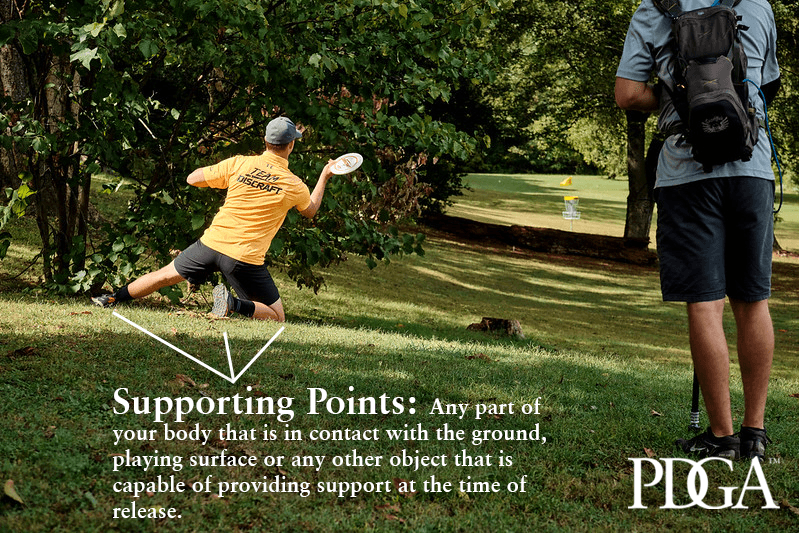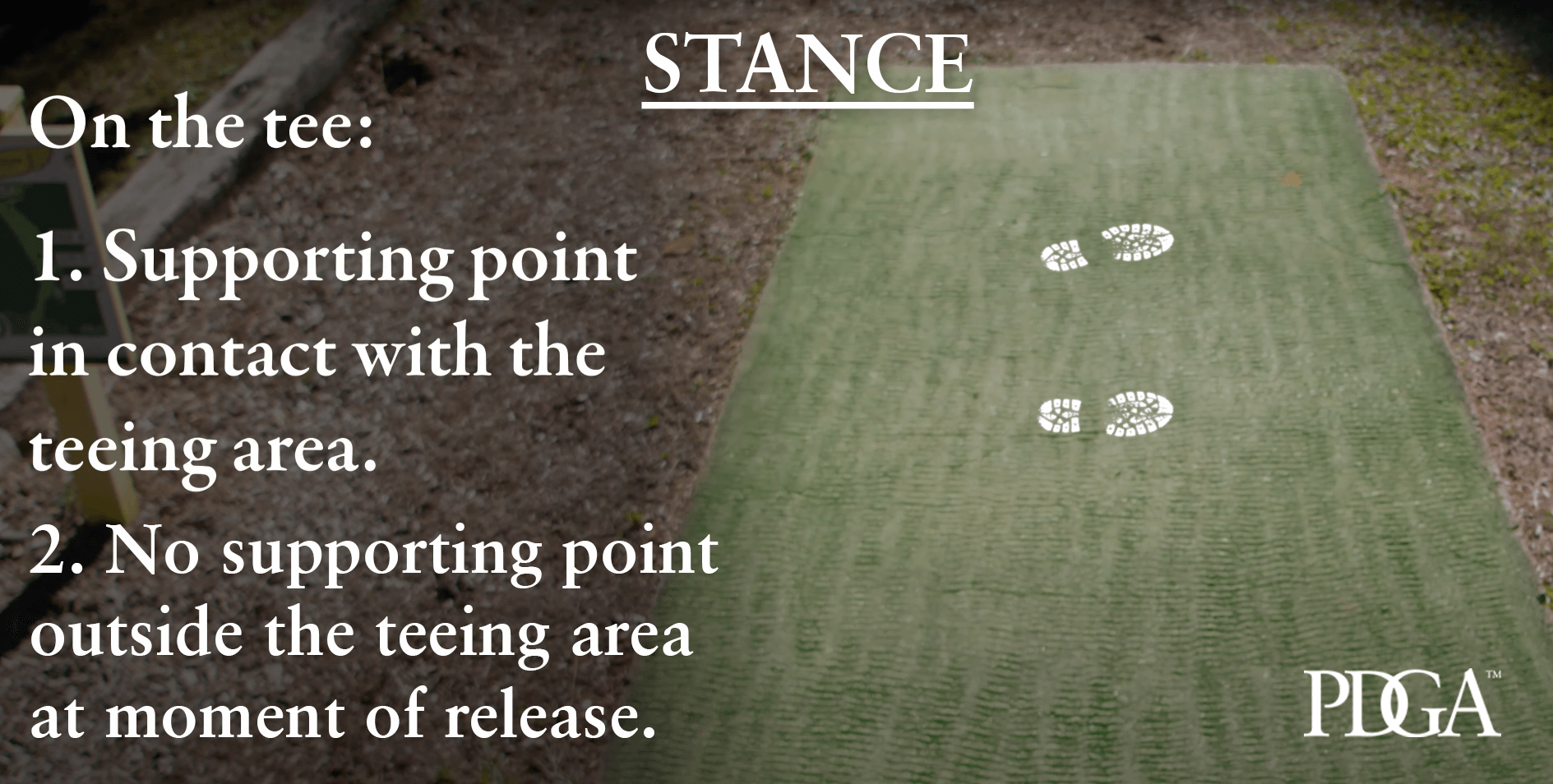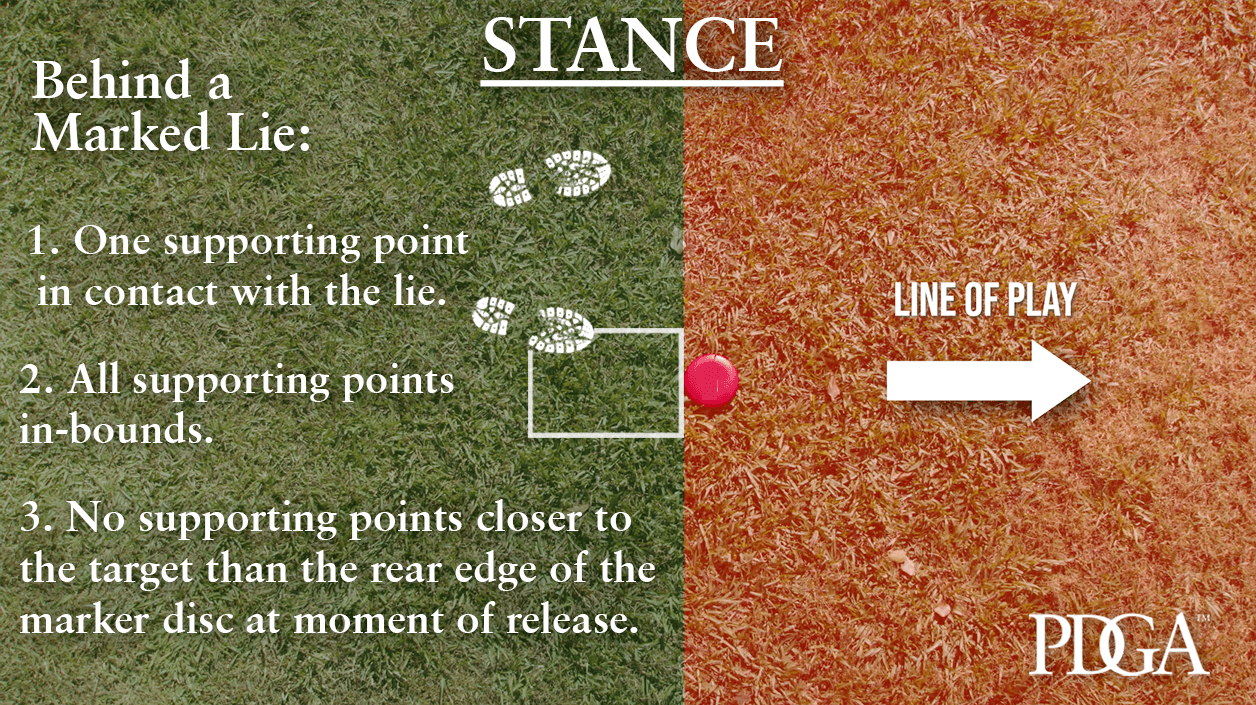Disc Golf Rules School - Episode 4: Taking a Stance
Disc Golf Rules School - Episode 4: Taking a Stance

Stance
In the last episode of PDGA Rules School, we learned that every shot in disc golf takes place from a lie—whether this is the notebook-sized area behind a marked area on the fairway, or the larger teeing area at the beginning of each hole.
In order to throw from a lie, you need to take a stance (802.07), which just means you need to position your body to make the throw. Whether or not the stance you take is legal depends on where your supporting points are at the moment of release.
Supporting Points
The concept of a supporting point is important throughout the rules of disc golf. A supporting point is any part of your body that is in contact with the ground, playing surface, or any other object that is capable of providing support, at the time of release.
Your feet are your most common supporting points, but you can also use a knee, your hand, or you can even sit on the ground. It doesn’t matter if your foot is holding your entire body weight or just a tiny fraction of it - if it’s in contact with the playing surface at the point you release your disc, it is considered a supporting point.

On the Tee
On the tee (802.04), the rules require that we take a stance that includes at least one supporting point that is in contact with the lie and no supporting point that is outside of the teeing area at the moment of release.
The rule is written in a way that allow players to run up to the tee shot and follow-through past the teeing area after releasing the disc. It only requires that the stance conforms at the moment of release.

Behind a Marked Lie
The stance rule changes when throwing from a lie behind a marker disc.
Here the area of the lie is only 20cm wide and 30 cm deep—about the size of a piece of notebook paper—and while you still need to have at least one supporting point in contact with the lie, you are allowed to have your other foot or another supporting point of contact outside of the lie. The only limitations are that no supporting point can be any closer to the target than the rear edge of the marker disc and all supporting points must be in-bounds at the moment of release.
Again, it may be possible to take a run-up to throw your shot, but with a target area much smaller than the tee pad it can be more difficult to make sure that your foot is in contact with a marked lie.

Stance Violation
If a member of your group doesn’t believe that you were making contact with the lie at the moment of release, or if one or more of your supporting points crossed into a prohibited area, then they can call a stance violation. Stance violations must be seconded by another member of the group, and if it is seconded, then your throw will still count but you’ll receive one penalty throw added to your score for that hole.
Check out our complete PDGA Rules School Video Series on YouTube »
Extra Credit: Moving Debris
You are allowed to move casual obstacles like stones, leaves, twigs, unconnected branches, or any item designated by the TD if they are partially or completely on the lie or in the stance area (803.01), but the rules require to choose the stance that results in the least movement of any obstacle that is a permanent part of the course, like connected tree limbs or park equipment.
Once a stance is taken, you can’t move an obstacle in order to make room for a throwing motion, although it is ok if your throwing motion causes incidental movement of the obstacle.
Later on in this series, we’ll cover how to take relief from obstacles that prevent a legal stance, and how the putting area changes the rules a bit more.
For more information visit the Official Rules of Disc Golf and be sure to check back each Thursday for a new installment of PDGA Rules School.
See you out on the course!
